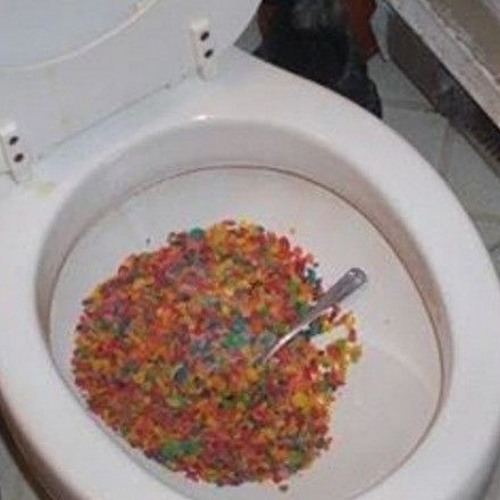What are your thoughts regarding Think Twice Before Flushing Food Down Your Toilet?

Introduction
Many people are usually confronted with the predicament of what to do with food waste, specifically when it comes to leftovers or scraps. One typical question that develops is whether it's alright to flush food down the bathroom. In this post, we'll explore the reasons why individuals may consider purging food, the consequences of doing so, and different techniques for proper disposal.
Reasons that individuals might take into consideration purging food
Lack of understanding
Some people might not be aware of the possible injury brought on by purging food down the toilet. They might incorrectly believe that it's a harmless practice.
Benefit
Flushing food down the toilet might feel like a fast and very easy solution to taking care of undesirable scraps, particularly when there's no close-by trash bin readily available.
Idleness
Sometimes, individuals may merely choose to flush food out of large laziness, without taking into consideration the effects of their actions.
Effects of flushing food down the bathroom
Environmental impact
Food waste that winds up in rivers can contribute to pollution and injury water environments. Additionally, the water used to flush food can strain water resources.
Plumbing problems
Flushing food can cause clogged pipelines and drains pipes, triggering pricey plumbing repair services and inconveniences.
Types of food that should not be purged
Fibrous foods
Foods with fibrous appearances such as celery or corn husks can get tangled in pipes and cause blockages.
Starchy foods
Starchy foods like pasta and rice can take in water and swell, resulting in clogs in pipes.
Oils and fats
Greasy foods like bacon or cooking oils should never be flushed down the toilet as they can solidify and trigger clogs.
Correct disposal methods for food waste
Making use of a garbage disposal
For homes outfitted with waste disposal unit, food scraps can be ground up and flushed through the pipes system. Nevertheless, not all foods appropriate for disposal in this way.
Recycling
Particular food product packaging products can be reused, decreasing waste and lessening environmental effect.
Composting
Composting is an environmentally friendly method to dispose of food waste. Organic materials can be composted and made use of to improve dirt for horticulture.
The value of correct waste management
Reducing ecological damage
Appropriate waste management techniques, such as composting and recycling, aid decrease contamination and preserve natural resources for future generations.
Protecting plumbing systems
By staying clear of the technique of flushing food down the bathroom, homeowners can stop expensive pipes repairs and preserve the honesty of their pipes systems.
Conclusion
To conclude, while it might be alluring to purge food down the commode for benefit, it's important to comprehend the potential repercussions of this activity. By embracing proper waste administration methods and dealing with food waste responsibly, people can add to much healthier plumbing systems and a cleaner setting for all.
FLUSH FOOD DOWN THE TOILET?
FLUSHING FOOD CAN CAUSE BLOCKED DRAINS IN YOUR HOME
All of the plumbing fixtures in your home are connected to the same sewer pipe outside of your home. This outdoor sewer pipe is responsible for transporting all the wastewater from your home to the Council sewer mains. Even small pieces of food that go down the kitchen sink can cause problems for your sewer. It should therefore be obvious that flushing larger bits of food, such as meat, risks a clog in either the toilet itself or the sewer pipes. Flushing greasy food is even more problematic because oil coagulates when it cools, coating the interior lining of your pipes.
THE TOILET IS NOT A BIN
Food isn’t the only thing that people shouldn’t be flushing down the toilet. People use the toilet to dispose of all kinds of things such as tampons, makeup wipes, dental floss, kitty litter and even underwear. Water goes to great lengths to educate residents about the high costs and stress placed on wastewater treatment systems simply from people flushing the wrong stuff down the toilet. It costs taxpayers millions of dollars each year, and homeowners thousands in blocked drain repairs.
FLUSHING FOOD IS A WASTE OF WATER
Flushing food is a waste of our most precious resource - water. In June this year Level 1 water restrictions were introduced to protect water supply from drought conditions. Much of New South Wales continues to be affected by prolonged drought with recent figures revealing up to 97 per cent of the state remains in drought. Depending on whether you have a single or dual flush toilet, every single flush uses between five and 11 litres of water. In the current climate this is a huge amount of water to be wasting on flushing food that should be placed in the bin (or better yet, the compost).
https://www.jabplumbingsolutions.com.au/blog/can-you-flush-food-down-the-toilet

Do you appreciate reading about Is it safe to flush food (especially rice) down the toilet?? Post a remark further down. We'd be glad to find out your thoughts about this blog post. In hopes to see you back again in the near future. Sharing is good. Helping others is fun. I love reading our article about .
Schedule Service